The SUV segment has gained immense popularity in recent years, with more drivers gravitating towards vehicles that offer versatility, comfort, and advanced technology. In this article, we put two compelling contenders head-to-head: the Nissan X-Trail and the Renault Espace. Both models promise a mix of innovation and performance, but who comes out on top? Let’s dive into the details.
Nissan X-Trail vs Renault Espace – Which model is better for everyday use?
Everyday use, family trips or long-distance drives – here’s where the differences show.
Discover whether Nissan X-Trail or Renault Espace fits your lifestyle better.
Design and Dimensions
When it comes to size, the Nissan X-Trail and Renault Espace are closely matched. The X-Trail measures at 4680 mm in length, 1840 mm in width, and 1720 mm in height, offering a robust presence on the road. In comparison, the Espace is slightly larger, featuring a length of 4722 mm, a width of 1843 mm, and a height of 1645 mm. Both vehicles come with five-door configurations, providing easy access to both front and rear seating areas.
Powertrains and Performance
The Nissan X-Trail boasts a range of power options, including petrol MHEV and full hybrid variants, delivering power outputs of 163 HP, 204 HP, and 213 HP. This offers impressive acceleration, with some versions achieving 0-100 km/h in as little as 7 seconds. Notably, it also provides a choice between front-wheel and all-wheel drive.
On the other hand, the Renault Espace is equipped solely with a full hybrid engine that produces 200 HP. This SUV accelerates from 0 to 100 km/h in 8.8 seconds and comes with a front-wheel drive configuration. While both models offer automatic transmissions, the X-Trail utilizes a CVT with a reduction gearbox, while the Espace features a traditional automatic gearbox.
Fuel Efficiency and Emissions
When discussing fuel consumption, the Renault Espace clearly has the edge, with a remarkable rating of just 4.7 L/100 km compared to the X-Trail's 5.7 to 6.9 L/100 km depending on the variant. This efficiency contributes to lower CO2 emissions, with the Espace releasing only 107 g/km, while the X-Trail ranges from 131 to 161 g/km. Thus, for eco-conscious drivers, the Espace stands out as a more sustainable option.
Interior Space and Comfort
Inside both SUVs, passengers can expect comfort and practicality. The X-Trail is known for its spaciousness, comfortably seating up to seven passengers with a trunk capacity of 575 L when all seats are in use, expanding to 585 L with all seats down. In comparison, the Renault Espace offers similar flexibility, with seating for up to seven and trunk space varying from 159 L to 581 L, depending on the configuration.
Technological Innovations
As expected from modern SUVs, both models come equipped with a plethora of advanced technology features. The Nissan X-Trail offers cutting-edge driver assistance systems, including ProPILOT, which enhances driving comfort and safety during long journeys. It also features a sophisticated infotainment system that ensures connectivity with smartphones via Apple CarPlay and Android Auto.
Meanwhile, the Renault Espace impresses with its extensive tech offerings, including a digital cockpit and a large touchscreen interface that provides access to various vehicle settings and infotainment options. Both models also emphasize safety, providing a suite of active and passive safety features aimed at maximizing passenger security.
Final Thoughts
In conclusion, choosing between the Nissan X-Trail and the Renault Espace ultimately depends on the individual buyer's needs and preferences. The X-Trail offers versatility in powertrains and a sporty performance edge, while the Espace shines in efficiency and low emissions. Both vehicles boast comfort, ample space, and technological innovations that cater to the contemporary SUV driver. Whether your preference leans towards practicality or performance, both models are deserving of consideration in the competitive SUV market.
Here’s where it gets real: The technical differences in detail
Costs and Efficiency:
When it comes to price and running costs, the biggest differences usually appear. This is often where you see which car fits your budget better in the long run.
Nissan X-Trail has a somewhat advantage in terms of price – it starts at 34000 £, while the Renault Espace costs 37500 £. That’s a price difference of around 3514 £.
Fuel consumption also shows a difference: Renault Espace manages with 4.90 L and is therefore slightly more efficient than the Nissan X-Trail with 5.70 L. The difference is about 0.80 L per 100 km.
Engine and Performance:
Power, torque and acceleration say a lot about how a car feels on the road. This is where you see which model delivers more driving dynamics.
When it comes to engine power, the Nissan X-Trail has a minimal edge – offering 213 HP compared to 200 HP. That’s roughly 13 HP more horsepower.
In acceleration from 0 to 100 km/h, the Nissan X-Trail is clearly perceptible quicker – completing the sprint in 7 s, while the Renault Espace takes 8.80 s. That’s about 1.80 s faster.
In terms of top speed, the Nissan X-Trail performs a bit better – reaching 200 km/h, while the Renault Espace tops out at 174 km/h. The difference is around 26 km/h.
Space and Everyday Use:
Whether family car or daily driver – which one offers more room, flexibility and comfort?
Both vehicles offer seating for 7 people.
In curb weight, Nissan X-Trail is slight lighter – 1668 kg compared to 1673 kg. The difference is around 5 kg.
In terms of boot space, the Renault Espace offers slightly more room – 692 L compared to 585 L. That’s a difference of about 107 L.
In maximum load capacity, the Renault Espace performs noticeable better – up to 2224 L, which is about 800 L more than the Nissan X-Trail.
When it comes to payload, Renault Espace minimal takes the win – 581 kg compared to 574 kg. That’s a difference of about 7 kg.
Who wins the race?
The Renault Espace proves to be only a minor advantage and therefore becomes our DriveDuel Champion!
Renault Espace is the better all-rounder in this comparison.
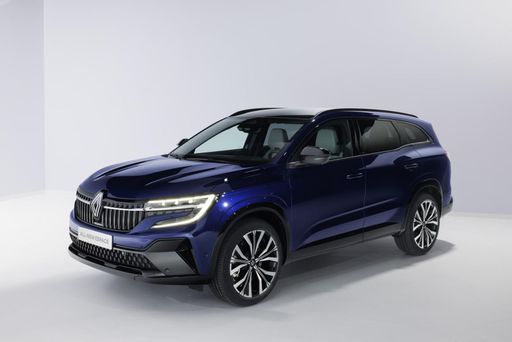 @ Renault Group Media
@ Renault Group Media
Renault Espace
Nissan X-Trail
The Nissan X-Trail is a roomy, no-nonsense family SUV that mixes sensible practicality with a quietly modern look, making it an easy choice for busy lives and weekend escapes. It drives with calm confidence, delivers a comfortable ride and sensible tech, and won’t demand drama while doing the everyday heavy lifting.
details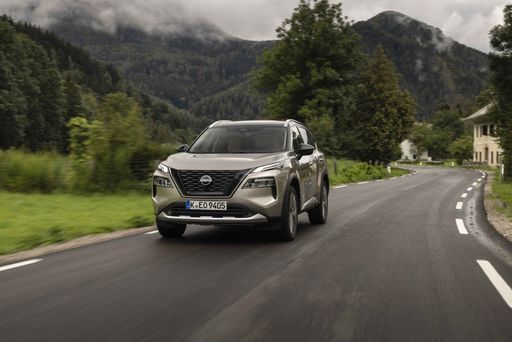 @ Nissan Motor Corporation
@ Nissan Motor Corporation
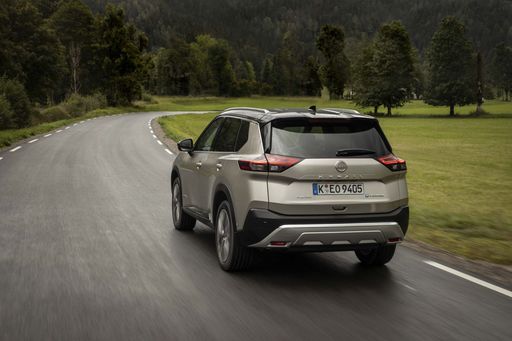 @ Nissan Motor Corporation
@ Nissan Motor Corporation
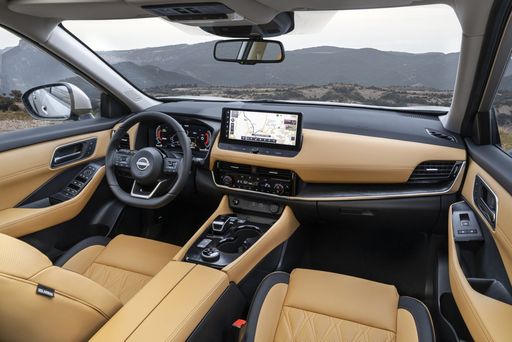 @ Nissan Motor Corporation
@ Nissan Motor Corporation
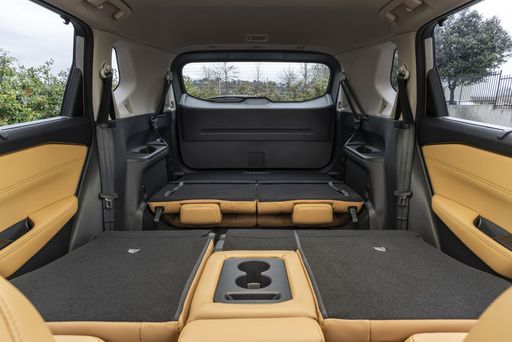 @ Nissan Motor Corporation
@ Nissan Motor Corporation
Renault Espace
The Renault Espace is a testament to innovative design, combining versatility with comfort to offer a unique driving experience. Its sleek exterior is complemented by a spacious interior, designed to cater to the needs of families and adventurers alike. With advanced technology and a focus on safety, the Espace seamlessly blends practicality with modern sophistication, making it a standout choice in the MPV segment.
details @ Renault Group Media
@ Renault Group Media
 @ Renault Group Media
@ Renault Group Media
 @ Renault Group Media
@ Renault Group Media
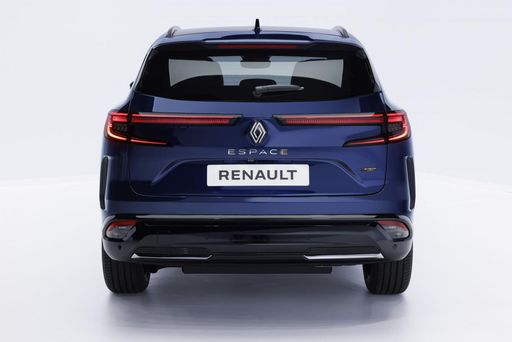 @ Renault Group Media
@ Renault Group Media
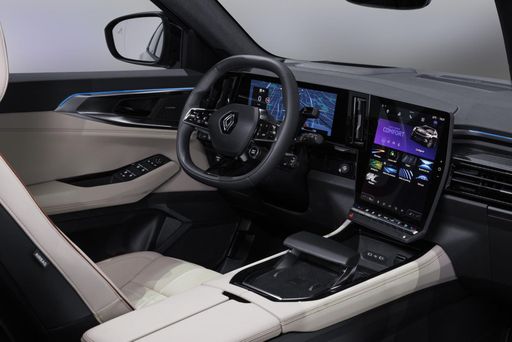 @ Renault Group Media
@ Renault Group Media
 @ Nissan Motor Corporation
@ Nissan Motor Corporation
|
 @ Renault Group Media
@ Renault Group Media
|
|
|
|
Costs and Consumption |
|
|---|---|
|
Price
34000 - 50400 £
|
Price
37500 - 41400 £
|
|
Consumption L/100km
5.7 - 6.9 L
|
Consumption L/100km
4.90 L
|
|
Consumption kWh/100km
-
|
Consumption kWh/100km
-
|
|
Electric Range
-
|
Electric Range
-
|
|
Battery Capacity
-
|
Battery Capacity
-
|
|
co2
131 - 161 g/km
|
co2
110 g/km
|
|
Fuel tank capacity
55 L
|
Fuel tank capacity
55 L
|
Dimensions and Body |
|
|---|---|
|
Body Type
SUV
|
Body Type
SUV
|
|
Seats
5 - 7
|
Seats
5 - 7
|
|
Doors
5
|
Doors
5
|
|
Curb weight
1668 - 1961 kg
|
Curb weight
1673 - 1783 kg
|
|
Trunk capacity
177 - 585 L
|
Trunk capacity
212 - 692 L
|
|
Length
4680 mm
|
Length
4746 mm
|
|
Width
1840 mm
|
Width
1830 mm
|
|
Height
1720 mm
|
Height
1645 mm
|
|
Max trunk capacity
1396 - 1424 L
|
Max trunk capacity
2054 - 2224 L
|
|
Payload
432 - 574 kg
|
Payload
404 - 581 kg
|
Engine and Performance |
|
|---|---|
|
Engine Type
Petrol MHEV, Full Hybrid
|
Engine Type
Full Hybrid
|
|
Transmission
Automatic
|
Transmission
Automatic
|
|
Transmission Detail
CVT, Reduction Gearbox
|
Transmission Detail
Automatic Gearbox
|
|
Drive Type
Front-Wheel Drive, All-Wheel Drive
|
Drive Type
Front-Wheel Drive
|
|
Power HP
163 - 213 HP
|
Power HP
200 HP
|
|
Acceleration 0-100km/h
7 - 9.6 s
|
Acceleration 0-100km/h
8.80 s
|
|
Max Speed
170 - 200 km/h
|
Max Speed
174 km/h
|
|
Torque
300 - 525 Nm
|
Torque
-
|
|
Number of Cylinders
3
|
Number of Cylinders
3
|
|
Power kW
120 - 157 kW
|
Power kW
147 kW
|
|
Engine capacity
1497 cm3
|
Engine capacity
1199 cm3
|
General |
|
|---|---|
|
Model Year
2024
|
Model Year
2025
|
|
CO2 Efficiency Class
F, D, E
|
CO2 Efficiency Class
C
|
|
Brand
Nissan
|
Brand
Renault
|
Is the Nissan X-Trail offered with different drivetrains?
The Nissan X-Trail is offered with Front-Wheel Drive or All-Wheel Drive.
The prices and data displayed are estimates based on German list prices and may vary by country. This information is not legally binding.
